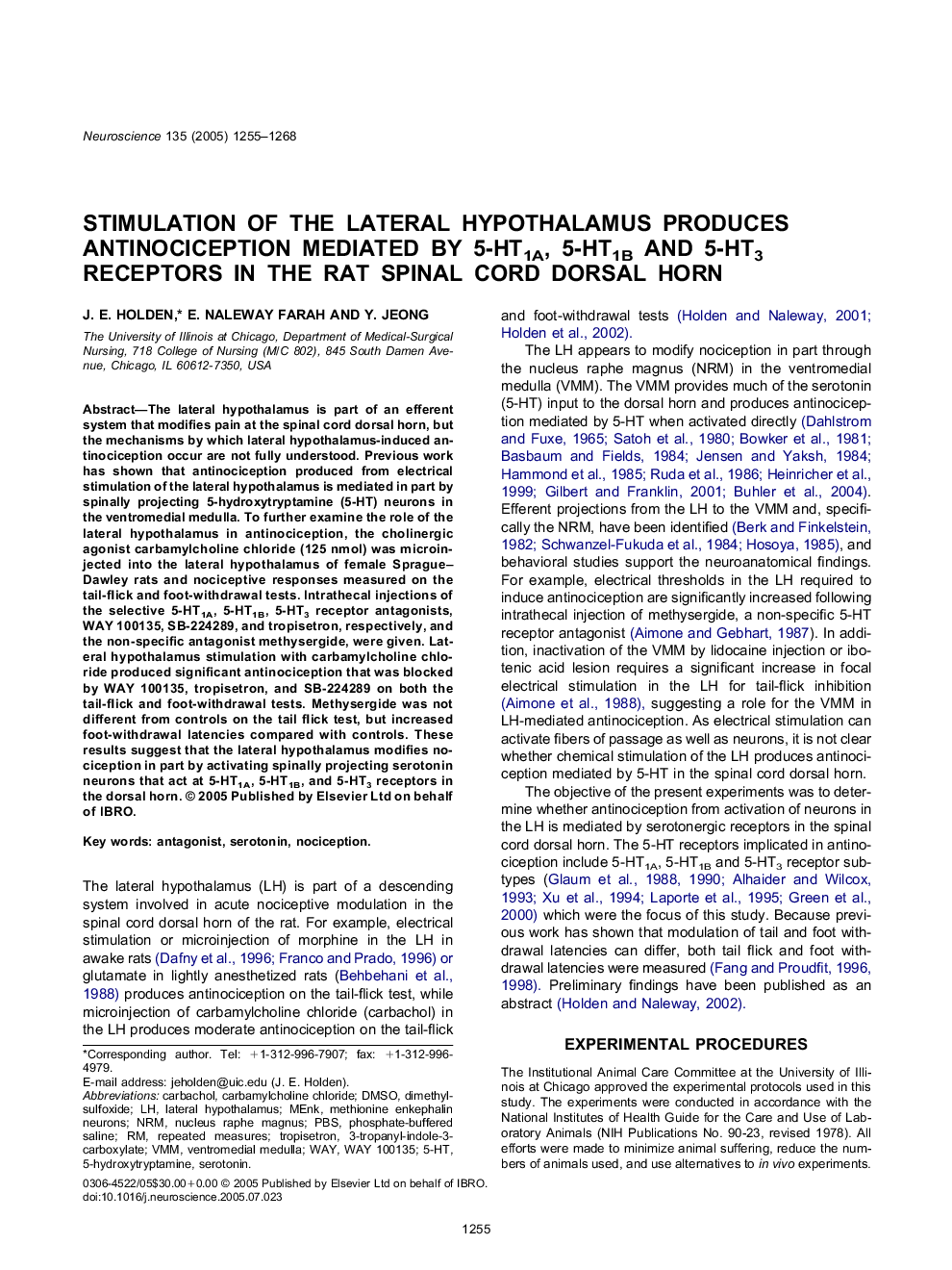| Article ID | Journal | Published Year | Pages | File Type |
|---|---|---|---|---|
| 9426413 | Neuroscience | 2005 | 14 Pages |
Abstract
The lateral hypothalamus is part of an efferent system that modifies pain at the spinal cord dorsal horn, but the mechanisms by which lateral hypothalamus-induced antinociception occur are not fully understood. Previous work has shown that antinociception produced from electrical stimulation of the lateral hypothalamus is mediated in part by spinally projecting 5-hydroxytryptamine (5-HT) neurons in the ventromedial medulla. To further examine the role of the lateral hypothalamus in antinociception, the cholinergic agonist carbamylcholine chloride (125nmol) was microinjected into the lateral hypothalamus of female Sprague-Dawley rats and nociceptive responses measured on the tail-flick and foot-withdrawal tests. Intrathecal injections of the selective 5-HT1A, 5-HT1B, 5-HT3 receptor antagonists, WAY 100135, SB-224289, and tropisetron, respectively, and the non-specific antagonist methysergide, were given. Lateral hypothalamus stimulation with carbamylcholine chloride produced significant antinociception that was blocked by WAY 100135, tropisetron, and SB-224289 on both the tail-flick and foot-withdrawal tests. Methysergide was not different from controls on the tail flick test, but increased foot-withdrawal latencies compared with controls. These results suggest that the lateral hypothalamus modifies nociception in part by activating spinally projecting serotonin neurons that act at 5-HT1A, 5-HT1B, and 5-HT3 receptors in the dorsal horn.
Keywords
Related Topics
Life Sciences
Neuroscience
Neuroscience (General)
Authors
J.E. Holden, E. Naleway Farah, Y. Jeong,
